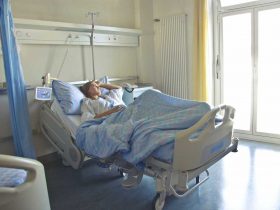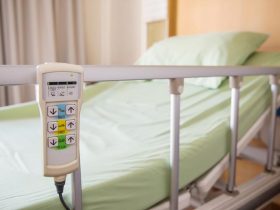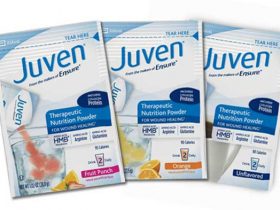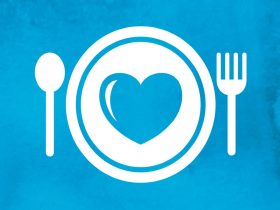By Nancy Collins, PhD, RDN, LD, NWCC, FAND
Obesity presents challenges to wound healing, but with knowledge and appropriate care interventions, we can provide optimal conditions to support the best possible outcome for every patient, no matter what size.
The US obesity epidemic reached a new all-time high in 2016, according to newly released Centers for Disease Control and Prevention data.1 Every single state has an obesity rate greater than 20%, and in five states it’s even greater than 35%. Topping the chart is West Virginia, at 37.7%. Many of these people end up in the healthcare system because of obesity-related diseases and sometimes develop a wound, such as a pressure injury. As we know, wounds that do not heal after 12 weeks are termed chronic, and lawsuits because of chronic wounds and their consequences are rampant.
The Obese Plaintiff
The discovery process surely will reveal whether a patient was overweight or obese because nutritional status and body weight are factors in the healing process. The tricky part is deciding how much, if any, of the chronicity of the wound was because of obesity.
In a recent case, the patient was 5′3″ and weighed 276 pounds. Can a person of this size heal? The defendants claimed they did everything according to the standard of care, but despite excellent care, the patient did not heal. They recounted some difficulty repositioning the patient because of her size and problems with moisture management in her skinfolds. The plaintiff thought those were excuses and that there was size bias in the care given to the patient. So what are the facts when dealing with a larger patient with a wound?
Obesity Challenges
Obesity results in skin integrity challenges.2 This is something we know with medical certainty. Adipose tissue has relatively less blood supply, which may lead to inadequate tissue oxygenation. Sometimes increased perspiration is seen, especially in skinfolds. This can raise the risk of bacterial and fungal infections. A greater risk of venous insufficiency, venous ulcers, and lymphedema also exists.
Stretch marks reflect the tension on the skin from expanding subcutaneous fat deposits. This increased tension on wound edges may predispose the patient to poor wound healing or actual dehiscence of a closed wound.
In addition, there are care considerations. Turning and repositioning is more difficult when caring for physically heavier patients. Back injuries are a common workers’ compensation claim for nurses and aides, so it is important to lift and move patients of size using proper techniques. These patients may have a decline in ambulatory status, as well as difficulty with activities of daily living.
Nutrition Challenges
Scale weight and body composition are two very different things. Most patients who are overweight according to the scale have lost copious amounts of lean body mass (LBM). It is easy to visually see this loss on patients who are thin, but the adipose tissue carried by overweight patients masks the fact that the patients may have very little muscle mass and may need repletion. It is sometimes off-putting to staff other than the nutrition staff when orders are given for nutritional supplements for obese patients. This reaction shows that some training on the issues of body composition, frailty syndrome, and sarcopenia is in order.
Loss of LBM leads to an inability to heal and recover from surgery and illness, decreased strength and energy, loss of independence, increased risk of falls and fractures, impaired healing, and reduced respiratory muscle strength, which is vitally important, especially for patients with chronic obstructive pulmonary disease.
These patients need nutrition intervention that will support rebuilding and repletion of LBM, including extra protein and the right amounts of amino acids, omega-3 fatty acids, and micronutrients.
Facility Challenges
Healthcare facilities must have properly sized beds, chairs, gowns, compression hose, and other equipment available to properly care for these patients. I am sure we have all heard the story of the patient who was made to go to the receiving dock and weighed on the industrial scale because the floor scales did not go above 300 pounds. I am sure any jury will feel that patient’s loss of dignity, and the actual quality of care would not matter much after this anecdote is told. The facility culture should include acceptance of patients of all sizes.
Learn More at Wild on Wounds (WOW)
Please join me at the WOW conference Thursday, October 5, at 4 pm to learn more about the specific interventions overweight and obese patients require. We will delve into nutrition requirements and practical strategies you can take back to your facility. In addition, while at the meeting, you can get get your own body composition analyzed on a state-of-the-art Seca Medical Body Composition Analyzer at no charge, including a complete report detailing what your body is composed of. I hope to see you there!
References
- Centers for Disease Control and Prevention. New CDC data shows US adults still struggling with obesity. Centers for Disease Control and Prevention website. https://www.cdc.gov/media/releases/2017/a0831-obesity-data-maps.html. Published August 31, 2017.
Beitz JM. Providing quality skin and wound care for the bariatric patient: an overview of clinical challenges. Ostomy Wound Manage. 2014;60(1):12-21.

















